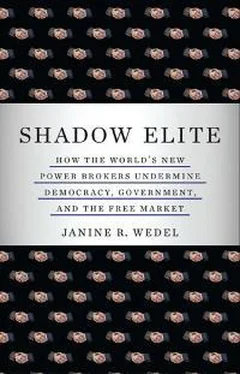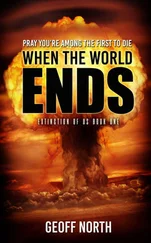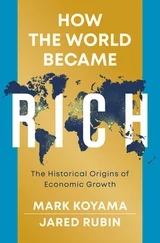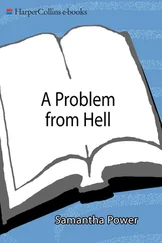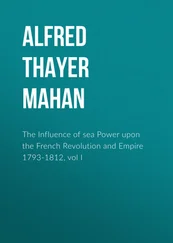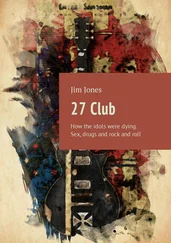23. Wolfowitz may be an exception in this regard. Jim Lobe points out that, in contrast to most of “his ideological fellow-travelers,” Wolfowitz has long expressed sensitivity to the plight of Palestinians, support for their national aspirations, and opposition to the Jewish settler movement. Jim Lobe, “Wolfowitz Pick for World Bank Prompts Head-Scratching,” Inter-Press Service, March 17, 2005, http://www.commondreams.org/cgi-bin/print.cgi?file=/headlines05/03.
24. Author interview of June 12, 2009, with W. Patrick Lang, an American who served as a liaison to the Israeli embassy.
25. Wolfowitz is quoted in Jim Lobe, “From Holocaust to Hyperpower.”
The senior fellow here cited is Caroline B. Glick. She published her sentiments in “Shackled Warrior: An NRO Q&A,” National Review Online , June 17, 2008, http://article.nationalreview.com/?q=ZTVkMWYzYjRkOWViM2NmYzYyOTU3NTg5NThhMTNlYTc=.
Perle’s coauthored book is David Frum and Richard Perle, An End to Evil: How to Win the War on Terror (New York: Random House, 2003). Quote is from pp. 6–7.
26. Frum and Perle, An End to Evil , quote is from p. 193; list of institutions from p. 196.
27. Ibid., pp. 227, 226, and 227.
28. Feith’s thoughts are from author’s interview with Douglas Feith, October 16, 2008; see also Feith, War and Decision.
29. Feith’s thoughts are from author’s interview with Douglas Feith, October 16, 2008; see also Douglas J. Feith, War and Decision: Inside the Pentagon at the Dawn of the War of Terrorism (New York: HarperCollins Publishers, 2008).
30. Frum and Perle, An End to Evil: How to Win the War on Terror , pp. 224, 228–229.
31. Moynihan is quoted in Jim Lobe, “From Holocaust to Hyperpower,” Inter Press Service News Agency, January 26, 2005, http://ipsnews.net/print.asp?idnews=27188. See also Daniel Patrick Moynihan, Pandaemonium, Ethnicity in International Politics (New York: Oxford University Press, 1994).
32. On alliances with the Christian Right, see, for example, Donald E. Wagner, “Marching to Zion: The Evangelical-Jewish Alliance,” Christian Century , June 28, 2003, http://findarticles.com/p/articles/mi_m1058/is_13_120/ai_104681907/; and Heilbrunn, They Knew They Were Right , p. 20.
33. See, for example, Anne Hessing Cahn, Killing Détente (University Park, PA: The Pennsylvania State Press, 1998), pp. 138–139, 136.
34. The first article was Albert Wohlstetter, “Is There a Strategic Arms Race?” Foreign Policy , no. 15 (Summer 1974), pp. 3–20. The second article, Albert Wohlstetter, “Optimal Ways to Confuse Ourselves,” Foreign Policy , no. 20 (Autumn 1975), pp. 170–198, was published a year after the first and responded to critics of the earlier piece. With regard to the United States risking being outdone militarily, see Wohlstetter, “Optimal Ways to Confuse Ourselves,” especially pp. 179 and 181.
35. With regard to unprecedented entrée, see Frances Fitzgerald, Way Out There in the Blue: Reagan, Star Wars and the End of the Cold War (New York: Touchstone, 2000), p. 83.
See also Cahn, Killing Détente , p. 113 and p. 153.
36. Perle quotes are from author’s interview with Richard Perle, July 17, 2009.
37. Pipes quotes are from author’s interview with Richard Pipes, May 12, 2009. Pipes similarly told former defense official and political scientist Anne Hessing Cahn, who has written a book on Team B, that the reason he selected Wolfowitz was “because Richard Perle recommended him so highly.” Cahn, Killing Détente , p. 150.
38. With regard to Perle being in the know, he likewise told Weisman: “I knew everybody on the team so I was aware of their findings.” See Weisman, Prince of Darkness: Richard Perle , p. 49.
39. Paul C. Warnke, “Killing Détente: The Right Attacks the CIA (Review),” Bulletin of the Atomic Scientists 55, no. 1 (January 1999), pp. 70–71.
40. The Pipes quote is from Weisman, Prince of Darkness: Richard Perle , p. 49.
41. With regard to Team B findings used as ammunition by cold warriors, see, for example, Michael Krepon and Dan Caldwell, The Politics of Arms Control Treaty Ratification (New York: Palgrave Macmillan Publishing, 1991), pp. 459–460.
With regard to the resurrection of the Committee on the Present Danger, see Fitzgerald, Way Out There in the Blue , p. 83; and Cahn, Killing Détente , p. 184. The Pipes’s quote is from author’s interview with Richard Pipes, May 12, 2009. See also Richard Pipes’s remarks on Team B in “Why the Soviet Union Thinks It Could Fight & Win a Nuclear War,” Commentary , July 1977; Richard Pipes, “Team B: The Reality Behind the Myth,” Commentary , October 1986; and his memoirs, Richard Pipes, Vixi: Memoirs of a Non-Belonger (New Haven: Yale University Press, 2005).
With regard to the conclusions of Team B, more than two decades after the Team B exercise, we now know, especially with benefit of Soviet archival data, that even the CIA’s more modest assessments at the time overpredicted Soviet defense spending and some of its weapons production. According to some analysts, even at the time plenty of information was available to demonstrate that Team B’s conclusions were off the mark. “Team B definitely did overestimate Soviet military prowess,” according to Nicholas Thompson, who has written a book that examines the subject ( The Hawk and the Dove: Paul Nitze, George Kennan and the History of the Cold War [New York: Henry Holt, 2009]). Richard Pipes, of course, counters: “We were right that the Russians believed that nuclear weapons can fight and win a war, which is why having nuclear superiority in terms of numbers of weapons, explosive power and defense against weapons made sense. The Russians did all these things [while] we did not” (author’s interview with Richard Pipes of May 12, 2009).
42. Report of Team “B,” Soviet Strategic Objectives: An Alternative View: Report of Team B, Intelligence Community Experiment in Competitive Analysis , Reproduced at the National Archives, http://www.gwu.edu/˜nsarchiv/NSAEBB/NSAEBB139/nitze10.pdf, Summary and Introductory Remarks. With regard to motivations rather than actual capacities, see also Anne Hessing Cahn, Killing Détente (University Park, PA: The Pennsylvania State Press, 1998), p. 163, for example.
43. Wolfowitz quote is from Jack Davis, “The Challenge of Managing Uncertainty: Paul Wolfowitz on the Intelligence Policy-Relations,” Studies in Intelligence 39, no. 5, 1996, http://www.cia.gov/csi/studies/96unclass/davis.htm.
44. Mann, Rise of the Vulcans , p. 74.
45. When National Security Advisor John Poindexter was questioned during the famous 1987 joint congressional hearings (before the House Select Committee to Investigate Covert Arms Transactions with Iran and the Senate Select Committee on Secret Military Assistance to Iran and the Nicaraguan Opposition) about what the president knew of the meetings about illegal weapons sales to Iran, Poindexter acknowledged having discussed with him the results of a “nine-point plan” agreed upon by Albert Hakim and an Iranian representative in October 1986 in Frankfurt. He reported that the president approved of these negotiations—which were adapted from an earlier version of an Oliver North plan—with only small exceptions. Theodore Draper, “Out of Control,” A Very Thin Line (New York: Hill and Wang, 1991), pp. 434–435. The Contra side of the affair, too, carried the presidential seal of approval: Reagan had vowed to keep the anticommunist Contras alive “body and soul.”
46. This term was used by Independent Counsel Lawrence Walsh (United States Court of Appeals District of Columbia Circuit, Final Report of the Independent Counsel for Iran-Contra Matters: Volume 1: Investigations and Prosecutions , Washington, DC, August 4, 1993). See Part 5, “The Flow of Funds and the Private Operatives,” http://www.fas.org/irp/offdocs/walsh/part_v.htm.
Читать дальше
